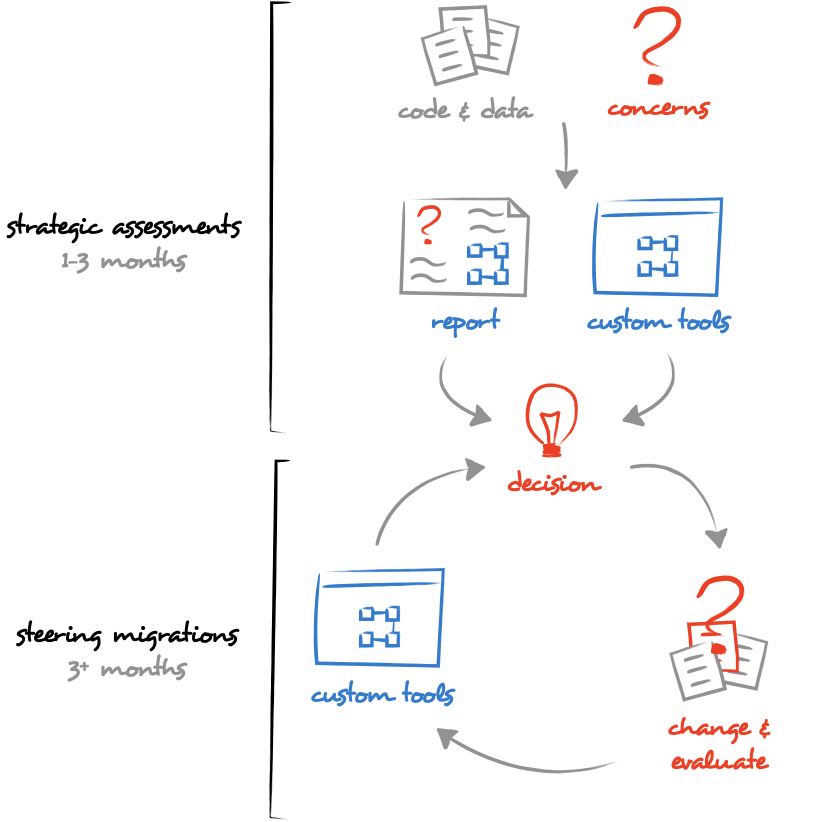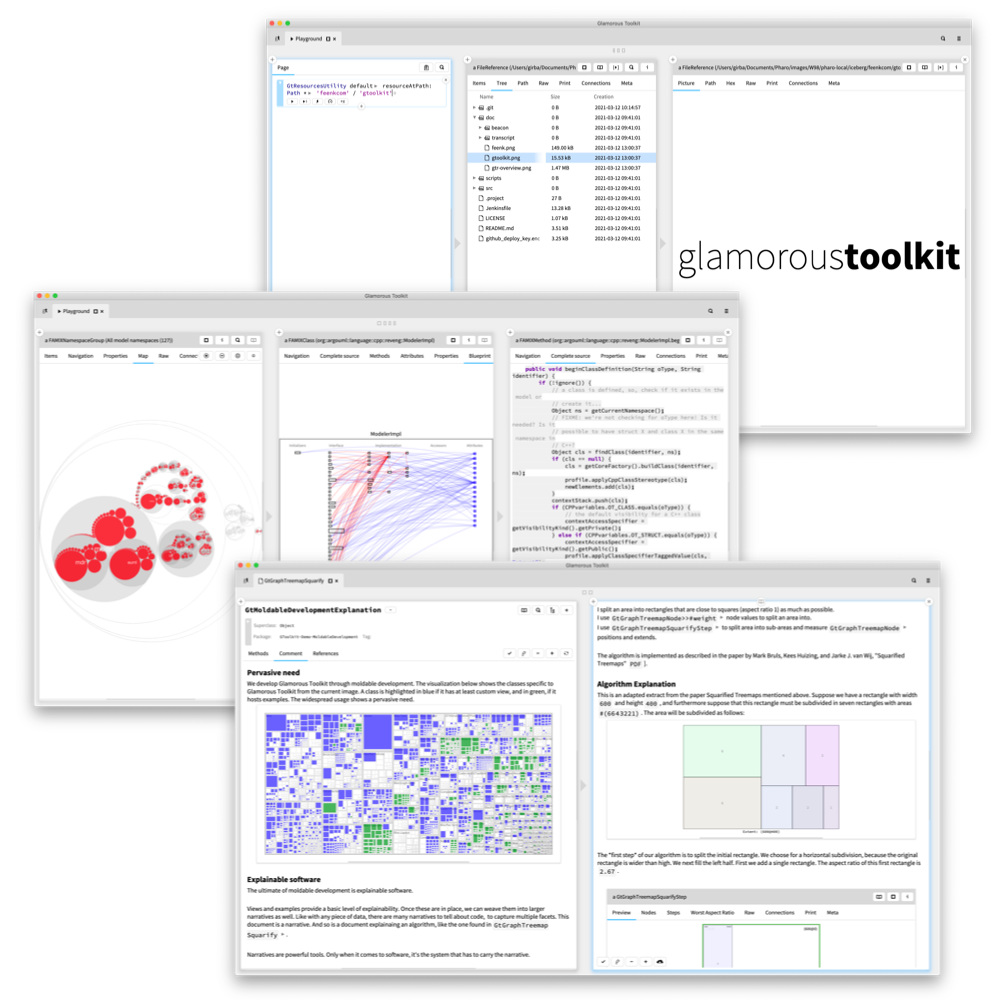We modernize legacy systems.
To achieve this, we use a mix of technology and business assessment, technology optimization, reverse engineering and migration.
Our clients typically have long lasting systems they don't know how to move forward. They've often tried unsuccessfully in the past. In some cases, their business critical systems have become black boxes or are even coded in languages that no longer exist.
A typical engagement
Strategic assessment: 4-12 weeks
We start with an intense period to learn about your systems and your context. We work closely with you and guide the process through custom tools. The result is a concrete description of options.
Steering migrations: 12+ weeks
Once a direction is chosen, we join and guide your team to steer the system. We rely on custom tools that we continuously develop to visualize, check and change the system according to the problems the team discovers along the way.

Do we work in your industry? What about your specific technology?
We probably do. If not, we'll learn.
We worked with various domains including insurance, transportation, hospitality, semiconductors, data privacy, retail, automotive, and acoustics. And we worked with systems written in a variety of languages and technologies like Java/SpringBoot, C#, JS/Angular/React, Python, PHP, Smalltalk, C++, Qt, Delphi, COBOL, SQL, PEGA and even proprietary languages.
What people say about us
We wanted to move a component that is considered off limits… We gave it to them … How did you guys do it in such a short amount of time? … We believe in your methodology.
Chris Thorgrimsson
Senior Technical Director, LamResearch.com
As Saloodo was transforming our MVP to a market ready product, feenk helped us with software assessments that shed accurate insight into the system that helped steer its development into the right direction towards building a robust, extendable and scaleable platform that could adapt to business requirements much faster.
Elaine Tan
CTO, saloodo.com
While thinking of a common code base for our software products we were going in circles not knowing where to start. The feenk team supported us not only with analysis tools but more importantly by coaching our teams how and where to start the restructuring and how this could become a feasible project to tackle. First steps have been taken to do analysis-based refactorings while still delivering features in parallel. We still have a long way to go but the initial hurdles are overcome!
Jan Biermann
Head R&D, dbaudio.com
Why us?
We bring a unique experience covering the whole spectrum, from a single line of code to decisions made at the company executive level.
We base our work on state-of-the-art scientific work. We actively research and develop new tools and techniques for thinking with and about software systems.
Our work was validated for more than a decade of working with highly difficult problems in legacy systems in multiple domains.
Frequently asked questions
This sounds technical. Are you also working with business people?
Software is technical, but we always start and end with the business problem. Our goal is to translate the technical details into what generates business value.
You mention that you solve hard problems. Can you give some examples?
Here are some.
A company relied on a core piece real-time technology for which they lost the knowledge. We reverse engineered, documented and ported it to a new environment. Here is a video held together with their director of engineering.
Another company had a data pipeline used for generating marketing offers that was too slow. The pipeline relied on 5 different technologies and they did not know how to make it faster. We guided their strategic investment by showing a detailed attribute-level overview of the pipeline.
In another case, we got a hardware company to learn how to invest in software and to discover opportunities residing in their systems. We then guided the team to migrate the systems to match the newly identified strategic direction.
In yet another case, we worked with a startup to guide their exploration in the data privacy area. We built a dedicated environment for on a elaborate domain model. And we accompanied their investment pitching through executable demonstrations about the implications of their model. Here is a video held together with their founder.
You mention that you can work with different domains and technologies. How can you possibly be able to deal with such a variety of situations?
We can do this because Moldable Development, the method we authored, helps us to systematically make the inside of systems explainable. Indeed, architecture recovery seems quite distinct from data lineage recovery, and even more so from learning about a new domain. Yet, all these are about humans needing to grasp the inside of the system concisely. We aggressively build custom tools to help with summarizing the system and construct narratives. Through these people get an accurate picture of their system and then to make better decisions. And this inevitably leads to generating new business value.
Do you always work with your own tools? Why?
We do work with the tools we develop because they provide a unique competitive advantage both for us and for our customers.
Do you offer some sort of analysis tool?
We solve concrete problems. We do rely on a number of automatic analyses, and we build a unique technology in this space. However, technology alone is only as good as the driver. We solve actual problems.
